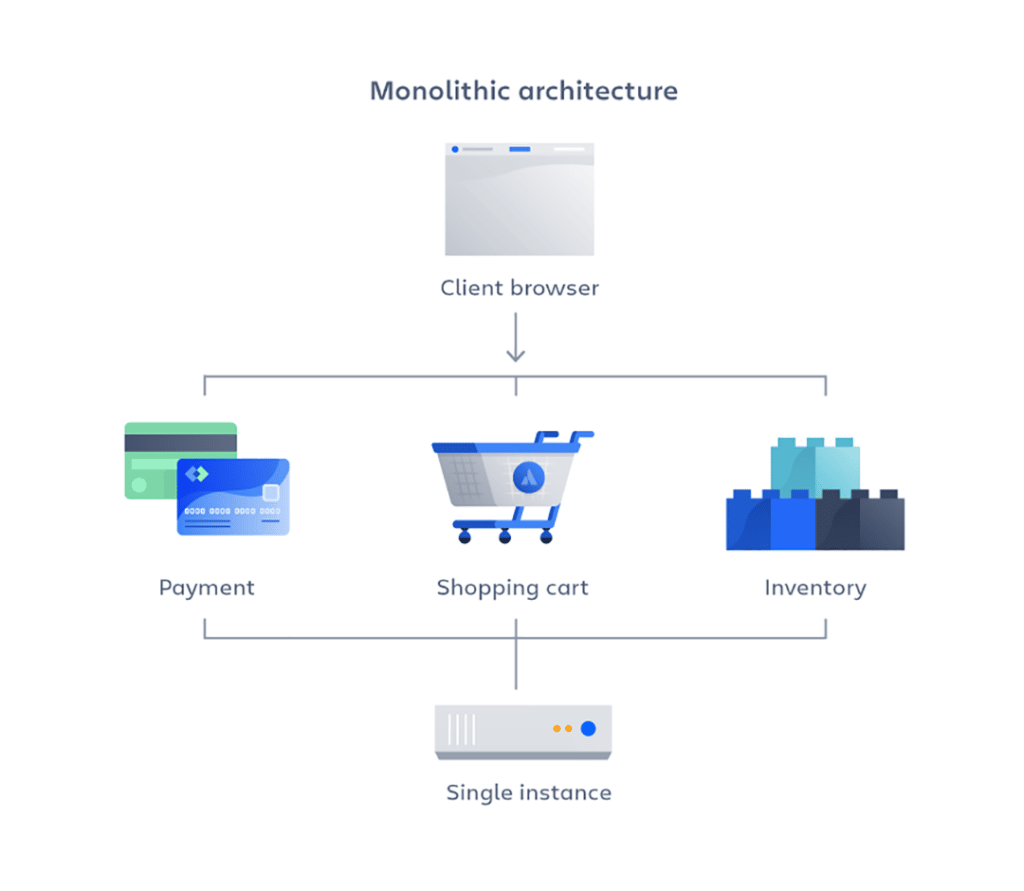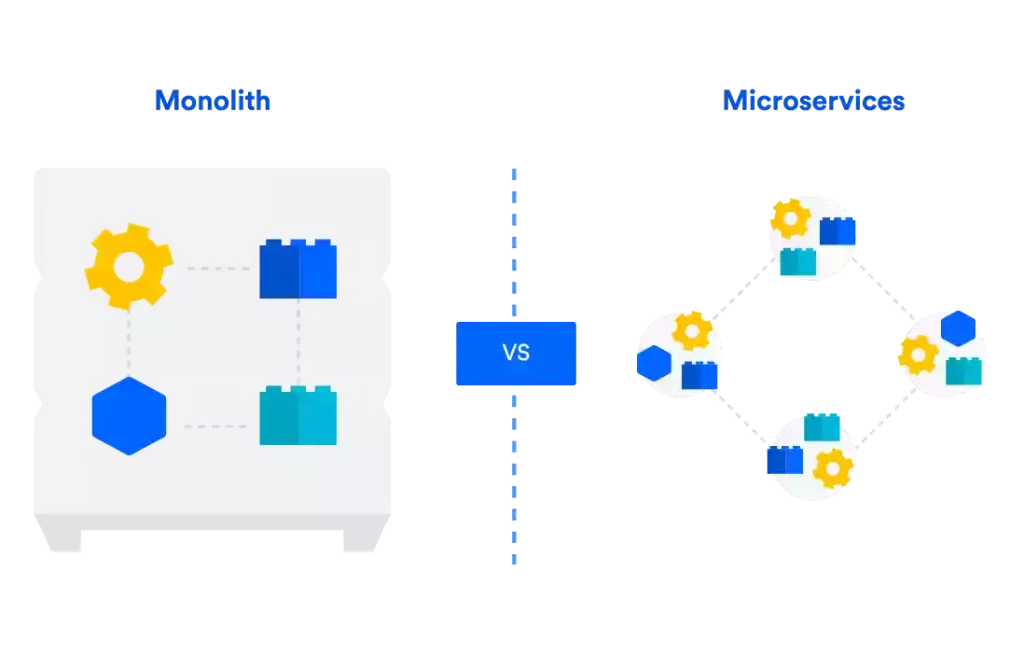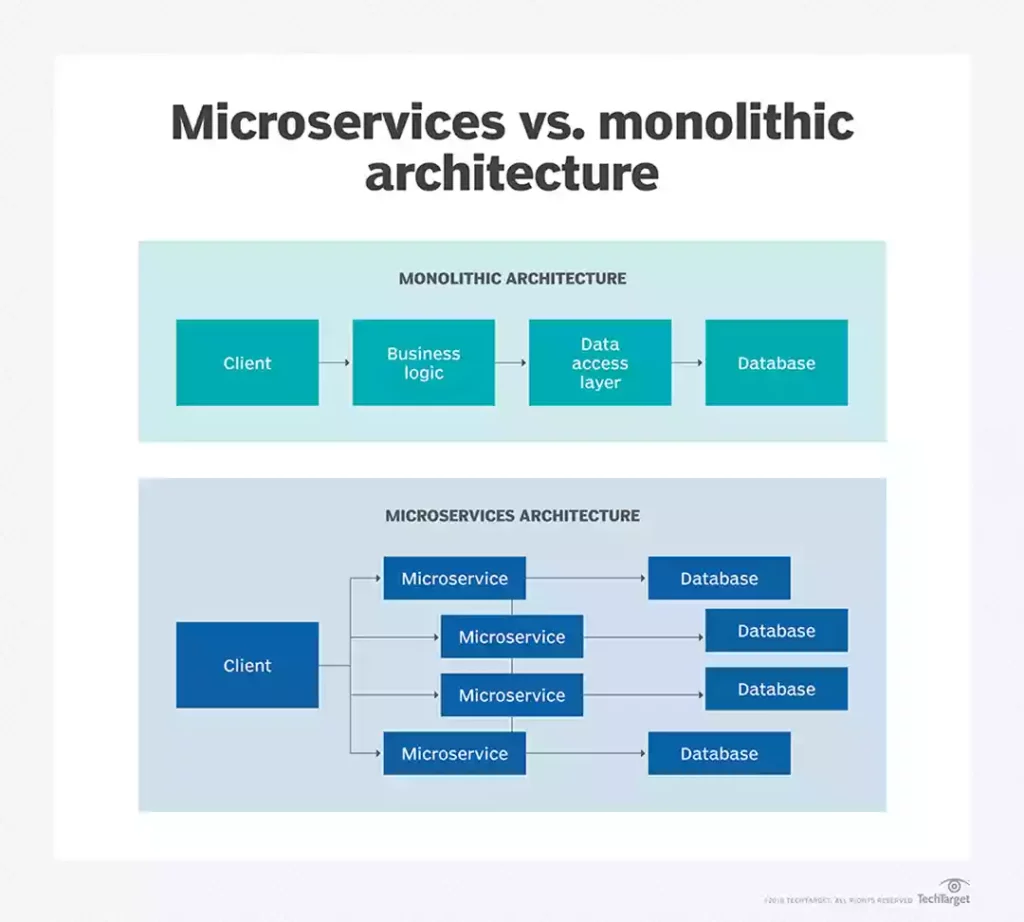What is Monolithic Architecture and Why It is Important
What is monolithic architecture?
Monolithic architecture is a software design pattern.
A software design pattern in which an application is divided into modules that communicate with each other using well-defined interfaces.
These modules are typically implemented as a single executable or DLL.
Introduction to What is Monolithic Architecture and Why It is Important

Learn about what monolithic vs. traditional monolithic architecture is and why It is important.
Monolith is composed all in one piece, a single-tiered software application that combines components into a single program.
What is monolithic architecture?
Learn about monolithic bulky, the traditional model for designing applications, where all components and functions are included in a single element.
Monolithic architecture is a traditional software development approach where all the application’s components are tightly coupled and housed within a single codebase. Any changes to one part of the application can impact the entire system. Monolithic architectures are often characterized by their large size and complexity, making them difficult to maintain and scale.
Characteristics of Monolithic Architecture:
- Self-contained: Monolithic applications contain all the necessary components to run independently.
- Tightly coupled: Components within a monolithic architecture are tightly coupled, meaning they are interdependent and cannot function without each other.
- Single codebase: Monolithic applications have a single codebase, which houses all the application’s code.
- Large and complex: Monolithic architectures can become large and complex as they grow in size and functionality.
Advantages of Monolithic Architecture:
- Simplicity: Monolithic architectures are relatively simple to design and understand, making them easier to develop and maintain initially.
- Visibility: Developers have a clear application overview, making identifying and resolving issues easier.
- Testing: Monolithic applications are easier to test as all components are contained within a single codebase.
Disadvantages of Monolithic Architecture:
- Scalability: Monolithic architectures can be difficult to scale as they grow in size and complexity.
- Deployment: Deploying changes to a monolithic application can be risky as it can potentially impact the entire system.
- Maintenance: Maintaining a monolithic architecture can become challenging as it grows larger and more complex.
- Flexibility: Monolithic architectures are less flexible than microservices architectures, making it difficult to adapt to changing requirements.
When to Use Monolithic Architecture:
Monolithic architecture is suitable for small to medium-sized applications with relatively simple requirements. It is also a good option for applications that require tight integration between components.
When to Avoid Monolithic Architecture:
Monolithic architecture is less suitable for larger, more complex applications with frequent changes and scalability needs. Microservices architectures offer greater flexibility, scalability, and maintainability for such applications.
Monolithic architecture has its place in software development, particularly for small to medium-sized applications with simple requirements. However, microservices architectures offer greater flexibility, scalability, and maintainability for larger, more complex applications. Businesses should carefully consider their application requirements and choose the architectural style that best suits their needs.
Why is monolithic architecture important?

One of the benefits of monolithic architecture is that it allows for easy unit testing. Since all the code is contained in a single module, it can be easily tested in isolation.
Modules can also be swapped out without affecting the rest of the application. This makes it possible to quickly and easily experiment with different implementations.
The life of a CMO is always full of surprises. You’re constantly being asked to do more with less, and you never seem to have enough time or resources.
You’re not alone. Recent studies show that CMOs only have a median tenure of 18 months. That’s barely enough time to get your feet wet, let alone impact the business.
A good look at moving from monolithic services to microservices should be examined.
What are the benefits of using it?
There are several benefits to using a microservices architecture, including:
- Increased agility and flexibility – You can quickly and easily experiment with different implementations with a microservices architecture. You can also update and deploy services independently, making it easy to respond to changes in demand or requirements.
- Improved scalability – A microservices architecture can handle increases in traffic or load more easily than a monolithic bulky. This is because each service can be scaled independently, as needed.
- More manageable complexity – A microservices architecture breaks an application into smaller, more manageable pieces. This makes it easier to understand and maintain the codebase. It also makes it easier to identify and fix problems.
- Better fault tolerance – If one service fails, it doesn’t affect the entire application. This helps ensure high availability and reliability.
Advantages of a monolithic architecture

Depending on the business model, companies will benefit from a monolithic or microservices architecture. The direct advantage of developing using a monolithic bulky is fast development cycle time.
The advantages of a monolithic architecture include:
- Easy deployment with one executable file makes deployment easier.
- Software and code development
- Performance
- Simplified testing
- Easy debugging
Disadvantages of a monolithic architecture
Netflix used monolithic applications until they grew too large and faced scaling challenges.
A simple request change order may require compiling and testing the entire platform, which goes against the agile approach in today’s developer’s world.
The disadvantages of a monolith include:
- Slower development speed
- Scalability
- Reliability – it could affect the entire application’s availability.
- The barrier to technology adoption
- Lack of flexibility – constrained by the technologies already used in the monolith may occur.
- Deployment – Any change order requires the redeployment of the entire monolith.
Advantages of microservices

Microservices solve several problems. Microservices architecture consists of units. You want a clean, fast process and infrastructure to meet customer satisfaction goals.
Units run independently, and each service can be developed, updated, deployed, and scaled without affecting the other services.
Software updates can be performed more frequently, improving reliability and performance.
As Matrix Marketing Group hits its 20-year mark and continues to grow, microservices make it easier to scale teams across the lines of ownership.
Before we started, Matrix tapped into 3 different development centers worldwide. Project teams went from pushing updates once a week to up to three times a day.
A centralized monolith constrained these distributed teams, and we needed to support them autonomously. Microservices allow us to do so.
The advantages of microservices are:
- Agility
- Flexible scaling – Multi-tenant and stateless and supporting larger instance sizes.
- Continuous deployment.
- Highly maintainable and testable
- Independently deployable
- Technology flexibility
- High reliability
Disadvantages of microservices
Unintended complexity happened from a few instances in monolithic codebases to distributed systems and services.
Determining how different components relate to each other, who owns a particular software component, or how to avoid interfering with dependent components can lead to problems.
Microservices can add increased complexity, leading to development sprawl or rapid and unmanaged growth.
With Matrix, we built a common functionality that would power the existing and future products.
If you are a single-product company, microservices are not necessary. The disadvantages of microservices can include:
- Development sprawl
- Added organizational overhead
- Debugging challenges
- Lack of standardization
- Lack of clear ownership
How to divide your application into modules

When designing a monolithic application, it’s important to consider how the codebase will be divided. There are many ways to do this, but here are a few tips:
- Separate business logic from the presentation will help keep the codebase organized and easily understood.
- Divide the application into functional areas – You may want to group services by function (e.g., authentication, billing, etc.) or platform (e.g., web, mobile, etc.).
- Use modularity to simplify dependencies – Testing and debugging cannot be easy when one module depends on another. By using modularity, you can minimize these dependencies and make the codebase easier to manage.
- Use object-oriented design principles – Classes and objects should be broken down into small, manageable pieces. This will help make the codebase more flexible and easier to maintain.
Testing monolithic applications
Testing a monolithic application can be difficult since all the code is contained in a single module. There are several ways to test a monolithic application, but here are a few tips:
- Separate the test environment from the production environment – This will help ensure that your tests run in a controlled environment and don’t interfere with the live system.
- Use mocking to simulate dependencies – When testing code that depends on other modules or services, you can use mocking to simulate their behavior. This will help you test your code in isolation.
- Use unit tests to test individual classes and methods – You can verify that they work correctly in isolation by testing individual classes and methods.
- Use integration tests to verify the behavior of multiple modules – You can ensure that they work together correctly by verifying the behavior of multiple modules.
Swapping out modules in a monolithic application
In a monolithic application, swapping out modules is a relatively easy process. Since the application is a single entity, all code is accessible from a single entry point. This makes it possible to modify or replace individual modules without affecting the rest of the application.
This modularity also makes it easier to test individual modules in isolation. By testing them in isolation, you can ensure that they are working properly and not affecting the rest of the application.
While modularity is an advantage, it can also be a disadvantage. If a module is not working properly, it can impact the entire application. It is important to test all modules thoroughly before releasing them into production.
The future of monolithic architecture

The future of monolithic architecture is uncertain. While it has many advantages, several factors could impact its popularity.
Some of the advantages of monolithic architecture include:
- Easier to understand and maintain – The codebase is divided into smaller, more manageable pieces, making it easier to understand and maintain.
- Higher performance and scalability – A monolithic application can handle increases in traffic or load more easily than a microservices architecture.
- Greater reliability – If one service fails, it doesn’t affect the entire application.
However, several factors could impact its popularity in the future:
- Increased complexity – As an application grows, it becomes more difficult to manage and maintain. This is because a monolithic bulky breaks an application down into a single module, which can be difficult to understand and debug.
- Increased development time and effort – building a monolithic application can be more time-consuming and difficult than building a microservices architecture. This is because each service must be developed and tested independently.
- Lack of flexibility – A monolithic application is less flexible than a microservices architecture. Adding or removing services without affecting the entire application is difficult.
It is difficult to say what the future of monolithic bulky will be. However, it has some advantages and disadvantages that should be considered when deciding whether or not to use it for a project.
3 examples of monolithic architecture at scale
1. Monolithic architecture at scale – the example of Facebook
Facebook is a prime example of a monolithic architecture at scale. With over 2 billion active users, the site must handle enormous traffic.
Facebook can handle this load easily due to its monolithic architecture despite its size. All code is contained in a single module, making it easy to manage and scalability. This allows the site to handle increases in traffic without breaking down.
2. Monolithic architecture in the financial sector – the example of Wells Fargo
Wells Fargo is a financial institution that relies on a monolithic architecture for its website and mobile app. The company’s website must handle millions of transactions daily, and its mobile app must support millions of customers.
Wells Fargo’s monolithic architecture can handle this load easily thanks to its modularity. All code is accessible from a single entry point, making it easy to modify or replace individual modules without affecting the rest of the application. This makes it possible to test and deploy new features quickly and efficiently.
3. Monolithic architecture in healthcare – the example of Epic Systems
Epic Systems is a healthcare software company that uses a monolithic architecture for its applications. This allows the company to manage and process huge amounts of data quickly and efficiently.
Conclusion
Monolithic architecture has several advantages, including ease of understanding and maintenance, higher performance and scalability, and greater reliability.
However, its popularity could be impacted by several factors, including increased complexity, development time and effort, lack of flexibility, and the example of Facebook.
It is important to consider these factors when deciding whether or not to use monolithic architecture for a project.
General FAQs
What is Monolithic Architecture?
Monolithic architecture is an application structure in which all code is contained in a single module. It is often used for applications that handle high traffic or load. This makes it easy to understand and maintain but difficult to add or remove services without affecting the entire application.
What are the benefits of Monolithic Architecture?
Monolithic architecture has several benefits, including ease of understanding and maintenance, higher performance and scalability, and greater reliability. It is often used for applications that handle high traffic or load.
What are the disadvantages of Monolithic Architecture?
One of the main disadvantages of monolithic bulky is its lack of flexibility. Adding or removing services without affecting the entire application is difficult. It can be more expensive to scale a monolithic application than a microservices application.
When is it appropriate to use Monolithic Architecture?
Monolithic architecture is appropriate when an application needs to handle high traffic or load. It is often used for applications that need to be reliable and fast. However, its popularity could be impacted by several factors, including increased complexity, development time and effort, lack of flexibility, and the example of Facebook. It is important to consider these factors when deciding whether or not to use monolithic architecture for a project.

